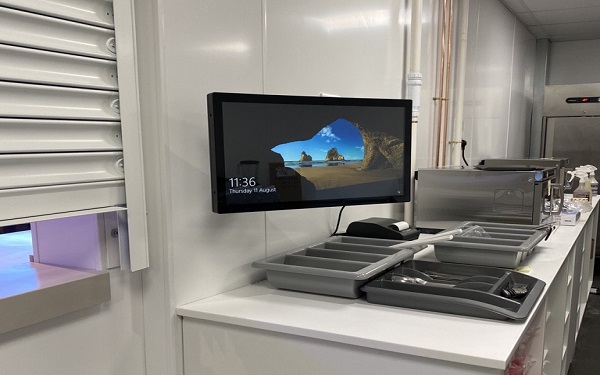When we talk about how EPOS and related technologies can improve life for restaurateurs and their customers, most of the time we focus on what happens front of house.
So, whether it’s touchscreen POS terminals with graphic menus to easily punch in orders, tablets at the tables to allow patrons to order and pay without waiting on waiting staff, or self-service kiosks in fast-food joints meaning there are no more queues to place an order – this is all stuff that happens on the customer side.
But as every restaurant and cafe owner knows, their business relies just as much on what happens behind the scenes, especially in the kitchen. If you want to provide diners with great service and a great experience, it’s not just about giving them extra options for how they order and pay.
You also want to make sure they receive the meal they order, that it comes in good time, that everyone at a table gets their meal together and so on. Getting all of that right doesn’t just mean having a talented and motivated kitchen crew. It also means getting the communication between front of house and the kitchen right.
That’s where Kitchen Display Systems come in.
Streamlining service
Kitchen Display Systems, or KDS, are an extension of your restaurant EPOS. A KDS is basically a digital upgrade on the old system of waiting staff sticking their hand-scrawled orders on a spike or sticking them to a board.
We all know the drawbacks to this way of passing orders from customers to the kitchen. Bits of paper have a habit of going missing, handwriting might be difficult to decipher. Mix a few paper orders up and you no longer know which came in first.
A KDS is based around a digital screen that is mounted in the kitchen. It’s hooked up to your EPOS, so as soon as orders are inputted, they get sent through to the KDS – no lost pieces of paper, no unintelligible handwriting.
The information is big, clear, and a KDS will also use software to schedule orders as they come in. So, if a particular item ordered takes longer to prepare and cook, the KDS will bump it to the top of the list so kitchen staff can get it ready in time with the rest of the order. What is more, if a customer changes an order half way through or a member of staff realizes a mistake has been made, the KDS will update all changes in real time.
A KDS connects to your EPOS terminal where staff tap in order on a touchscreen or similar. But it can also connect to any other ordering endpoint, whether that’s tablets on the tables, self-service kiosks etc. In fact, a KDS can support multiple order input channels. So, if a mix of waiting staff taking orders at tables and takeout customers using kiosks works best for your restaurant, you don’t have to worry about running a dual ordering system, or making sure kiosk orders aren’t prioritised over table orders. It all gets sorted out and displayed on the same screen.
By streamlining order processes in this way, kitchens are able to prepare meals more efficiently, reducing wait times and therefore improving the customer experience. Lower risk of mistakes being made with orders in the transition from front of house to kitchen also leads to more happy customers. And if you aren’t getting as many orders wrong, you also see waste reduced, helping to cut down on overheads.
If you would like to know more about how a KDS can transform your kitchen operations please get in touch today by emailing: marketing-uk@advantech-aures.com or call: 01928 599 966




